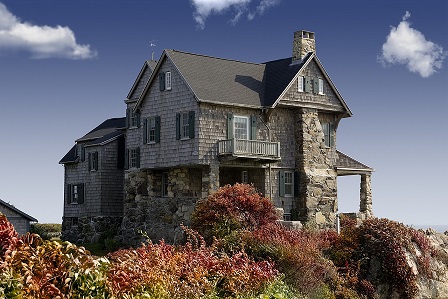Why A Building Survey Is Needed For UK Property

For various reasons, it is necessary to estimate a property’s value, including taxation, investment, insurance, financing, and sales listing. However, the most common reason is for determining a property’s purchase price.
In this article, we will be providing an introduction to building surveys and why it is necessary to have one for property valuation purposes.
Building surveys involve extensive inspection that provides a thorough evaluation of a property.
It is the most common type of survey that is available, particularly for residential clients, although other types of surveys that are available too.
A survey provides property owners with a better understanding of a property’s condition.
The building survey details the potential risks as well as expenditures that might be necessary to help them create the right maintenance plans for their properties.
Surveys can be prepared for buyers and homeowners, as well as investors for their portfolios to provide them with information on investments they may make in the future.
Building surveys, which are also called condition surveys, usually are conducted by chartered surveyors and might be provided as a report that offers a view of a property at a specific point in time. They include all of the accessible elements along with recommendations for potential strategic plans to deal with issues that might have occurred.
To learn more about building surveys, you can visit sites such as www.woodwardsurveyors.co.uk/our-services/building-surveys.html
The following buildings are the ones that can benefit the most from this type of survey:
- Buildings being purchased
- Buildings that have unusual construction features and designs
- Buildings that have been renovated, redeveloped or altered
- Buildings that are 50 years old and older
- Listed buildings
Due to the lack of standardisation among building surveys, it is critical that clients precisely and clearly describe what their requirements are.

Also, they need to voice any concerns they may have regarding certain elements of a building.
For example, they might want to have the floor structure, roof, heating equipment, or electrical checked.
Usually, these are not included as part of a standard building survey. However, a client can request them. The survey might not have access to some of these unless they are informed ahead of time so that the necessary arrangements can be made.
What objectives does a building survey have and what are some of the most common issues that are identified by surveyors?
The following are some of the most common objectives that might be included:
- Providing an estimate of how much the required work will cost.
- Providing conservation and maintenance recommendations.
- Analysing enquiries to prevent future problems.
- Analysing issues that need to be addressed to avoid severe damage from occurring.
- Analysing both current and past causes of deterioration.
- Detailing a property’s current condition and highlighting areas of failure or concern.
When conducting surveys surveyors need to be careful. Working in confined spaces, high places, or handling dangerous materials might be hazardous to their health. They need to very careful to identify buildings that show signs of deterioration, buildings that are being worked on, or unoccupied properties.
The following are the most common issues that are identified in a survey by building surveyors:
- A property’s general condition.
- Structural movement.
- Signs of defects.
- Signs of deterioration due to different kinds of condensation and damp
- Deterioration due to infestation and rot.
- Heating ventilation and air conditioning services.
- Checking any alterations that have made to a property.
- Drainage, plumbing, electrical and other types of building services.
- Energy consumption.
- Legal issues.
- Other environmental issues.
Before renovating, building, or purchasing a property, it is essential to have a condition survey to detail any potential and immediate problem areas.
The surveyor looks for any structural failure, areas that need to be repaired, areas that need to be replaced, movement and deterioration. Surveyors are primarily looking for any problems that might occur before any construction work starts.
They also should identify areas of the property that were not possible to inspect previously or identify any issues that need specialists to make further investigations.
It may take one day to conduct and complete a detailed survey of a regular house. It may then take 2 weeks or more to complete the final report. More complex properties or larger building might take more time to complete.
Whether you are maintaining or renovating a property, selling a property, or are a potential owner, a building survey can provide you with a thorough understanding of the current condition of a property -the operating systems and structure.
It is helpful in obtaining evidence of any issues that may alert the owners to potential problems.


